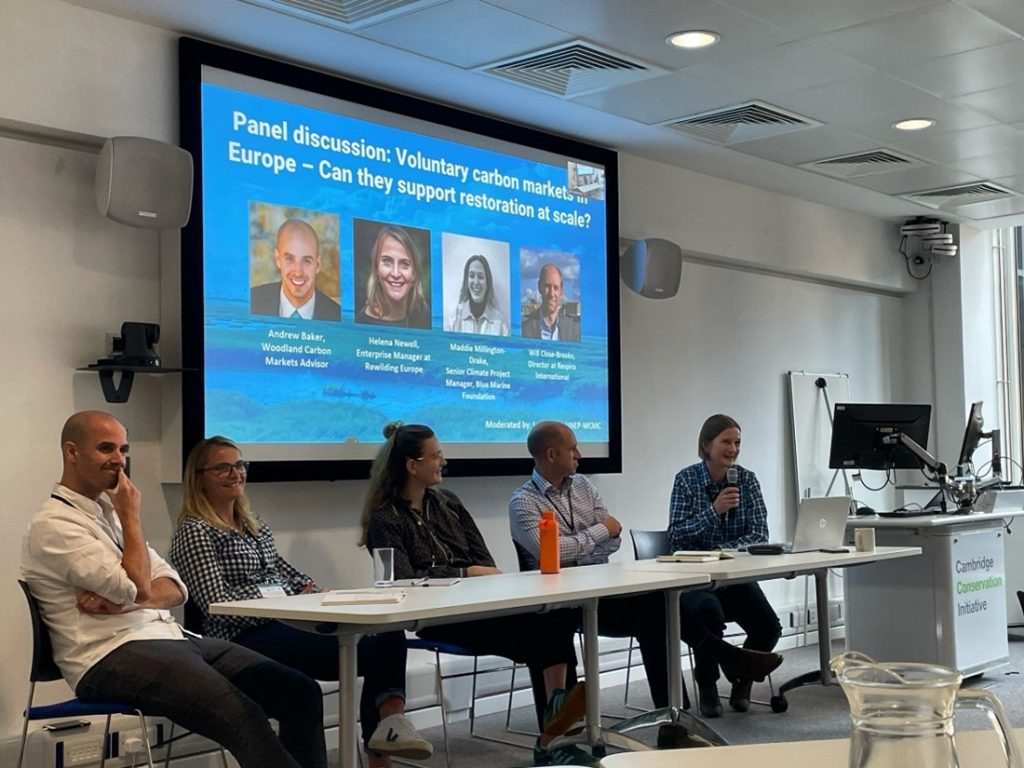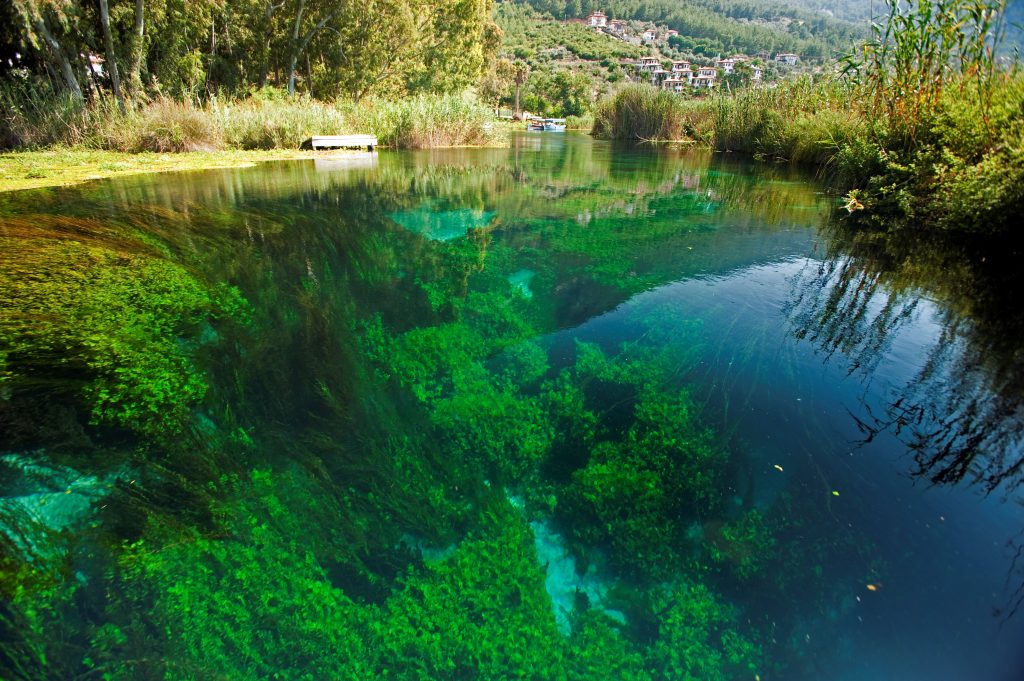News
Using carbon markets to break down barriers to ecosystem restoration in Europe

Comment | Dec 2023
As delegates discuss how to fund nature’s contribution to climate change mitigation and adaptation at COP28, Maria Antonova and Megan Critchley from UNEP-WCMC’s Nature-based Solutions team share insights gathered during a recent workshop that sought to boost understanding of how voluntary carbon markets can be harnessed to progress European nature restoration initiatives.
With more than 80 per cent of habitats in the European Union in poor condition, bringing Europe’s landscapes up to good ecological health is a substantial task – and an expensive one. It is estimated that it will cost more than EUR 8 billion a year to restore 30 per cent of habitats listed in the EU Habitats Directive by 2030, not including marine or green urban habitats.
On a global scale, carbon finance is increasingly acknowledged as part of the solution to reach the goals of the UN Decade on Ecosystem Restoration and the Paris Agreement. Carbon markets have the potential to generate large sums of long-term income that can close the nature finance gap and address the nature and climate crises faced by our planet. Ensuring confidence in the outcomes of these markets is high on the agenda at this year’s global climate summit, COP28.
There are many challenges and potential pitfalls to consider when engaging in carbon markets. To ensure that high-quality restoration projects can benefit, practitioners need the insight and capacity to navigate these markets.
The Endangered Landscapes & Seascapes Programme (ELSP) has a project dedicated to boosting this capacity, ‘Understanding Voluntary Carbon Markets’, which is led by UNEP-WCMC's nature-based solutions experts. In September 2023, the project hosted a panel discussion and workshop attended by staff from restoration projects, carbon standards, project developers, academics and organisations linked to buyers of carbon credits. The event sought to foster discussions about working collectively to bring down barriers to carbon finance investment and scale up high-integrity restoration work across European landscapes.

Fear of risk and lack of guidance hold back markets
Practitioners – those involved in managing ecosystems and selling the resulting carbon credits, such as private landowners, communities and non-government organisations – outlined the difficulties they face. These included the rigidity of methodologies for measuring and verifying carbon sequestrations, the high cost of monitoring and verifying climate mitigation outcomes, and a lack of guidance on how to productively engage with local communities and deliver on social outcomes.
Investors, meanwhile, can be apprehensive about supporting projects due to fears over reputational risk, particularly after recent media revelations about projects around the world overstating their climate benefits.
“The biggest barrier to scaling up voluntary carbon markets is risk,” said Andrew Baker of quality assurance standard the UK Woodland Carbon Code during the panel discussion. As well as the reputational risk to buyers and projects of being accused of greenwashing, carbon projects have to deal with physical risks, such as forest fires wiping out carbon credits they have worked to deliver and verify.
Part of the problem may be a disconnect between different carbon market actors and practitioners not understanding where they fit into the carbon project lifecycle. Workshop discussions often revolved around the idea of sharing risk between investors, projects and buyers. There was also recognition of the difficulty projects face keeping up with shifting goalposts and rules brought about by buyers’ increasing desire for more accountability.
Difficulties bundling biodiversity and carbon credits
The relatively young state of voluntary carbon markets in Europe presents opportunities to learn from global markets and enhance outcomes for nature. This is particularly true for coastal and marine ecosystems, or the “blue carbon” market. Currently, no blue carbon credits are being sold in Europe as data and methodologies lag terrestrial markets. However, they are underway, alongside pioneering efforts to link carbon savings with other ecosystem benefits such as improving biodiversity.

Many practitioners said that the market’s focus on carbon can sometimes clash with their biodiversity objectives. For example, even though biodiversity literacy among buyers is improving, rewilding approaches in Europe that deliver benefits to wildlife and communities are currently not aligned with existing carbon standards, according to Helena Newell, Enterprise Manager at Rewilding Europe, a non-profit organisation. The comparatively lower carbon benefits of these projects may not make them viable on the carbon market, despite their many benefits for nature and local people. This will require projects to either sell carbon credits at very high prices or seek to bundle their carbon credits with additional payments for biodiversity benefits or ecosystem services.
However, knowledge is currently lacking around how to incorporate nature co-benefits into carbon credits, particularly as they are tightly interlinked and delivered from the same landscape. “There is concern over how it all works together because you can’t really divorce the two,” said Will Close-Brooks, Director of Business Development at climate finance group Respira International. “How do you stack credits?”
Future is bright for Europe’s carbon markets
There is increasing awareness, on both the seller and buyer side, of what makes a restoration project positive in climate and biodiversity terms. This is important to ensuring that financing restoration projects through voluntary carbon markets in Europe is not plagued by greenwashing and poor relations with stakeholders and local communities. Increased trust in projects should reassure investors and buyers, which could help projects access much-needed funding to cover upfront costs. Moving forward, it is important that all the risk of implementing project work is not placed on the project itself, but is shared equitably between the project, investors and buyers. Doing so will help projects to plan and cost their activities more effectively, and ultimately to operate successfully.
Carbon market stakeholders are also hopeful that new technological advances such as remote sensing, acoustic monitoring and eDNA can help lower the cost and capacity barriers of calculating and verifying the delivery of carbon or biodiversity benefits.
Some stakeholders said they think recent headlines invalidating carbon offsetting could be a potential benefit for European restoration projects. Helena Newell of Rewilding Europe said that some buyers are increasingly “wanting to engage with institutions that they trust and that are delivering tangible carbon, biodiversity and social benefits in places that they can visit”.
“Buyers are starting to think that they should be addressing the issue of carbon neutrality closer to their operations, customers and supply chains rather than just in the Global South,” she added.
Despite the challenges, workshop attendees were clear: voluntary carbon markets present opportunities to support restoration at scale in Europe. However, collaboration and cooperation across the market is needed to overcome barriers and ensure positive outcomes for people, nature and climate.
The project Understanding Carbon Markets, funded through an Advancing and Applying Knowledge Grant of the Endangered Landscapes and Seascapes Programme, spoke with practitioners, carbon standards, brokers and industry experts to improve restoration practitioners’ awareness of opportunities and barriers of using carbon finance for nature actions.
The project, spanning 2021 to 2023, has produced a suite of guidance documents aiming to support restoration practitioners in accessing carbon markets for finance. These include a primer demystifying the mechanisms of the market, case studies with practical examples of carbon projects in Europe, a database of existing carbon standards available in Europe, and a costing tool for planning project expenses and profits.
Main image: AdobeStock_175665724
Have a query?
Contact us
communications@unep-wcmc.org
